
Piercing the veil
A new exhibition at Buxton Contemporary finds a rich complexity in the shadowy terrain between life and death.
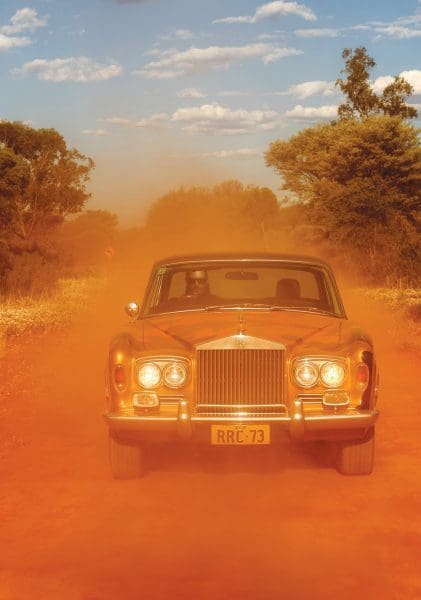
Reko Rennie. Photograph by Justin McManus.

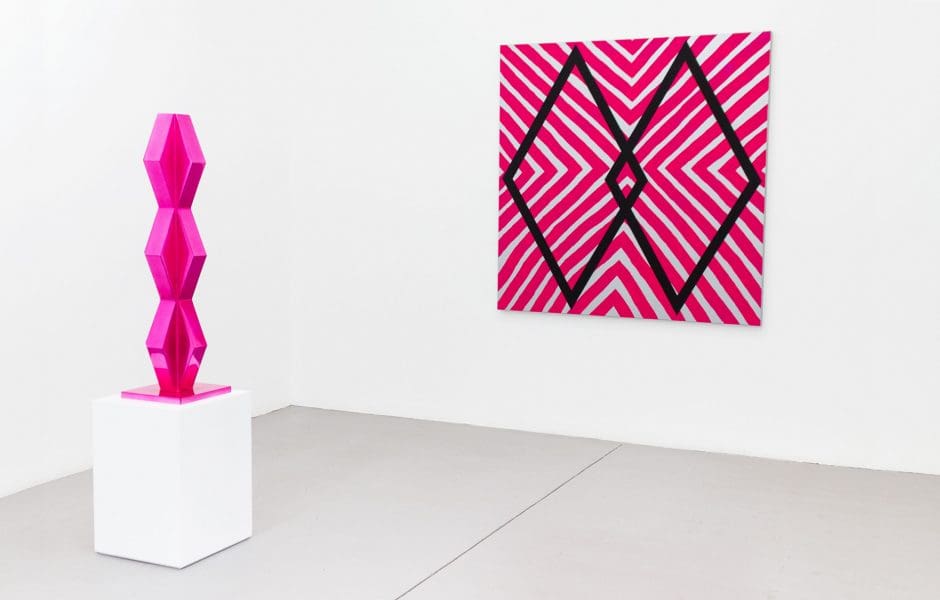
Reko Rennie, Neo Geo II, 2019, STATION, installation view. Courtesy the artist and STATION.
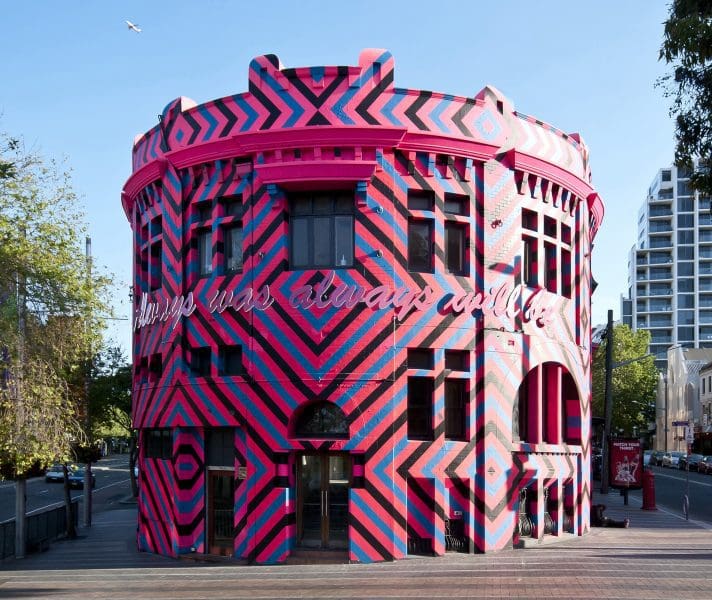
Reko Rennie, Always Was Always Will Be, 2012, T2 Building Sydney. Courtesy the artist.
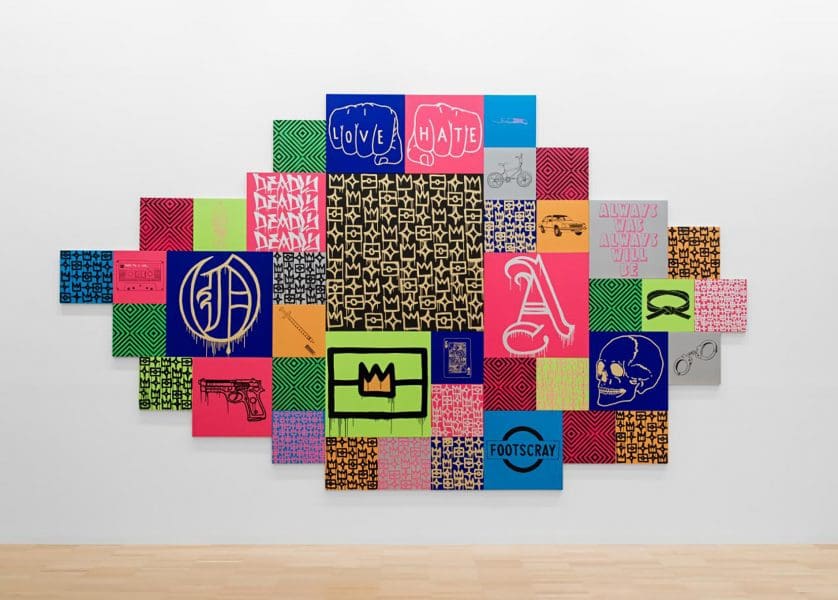
Reko Rennie, Initiation, 2013, synthetic polymer paint on plywood, 300.0 x 520.0 cm, The National Gallery of Victoria, Melbourne. Courtesy the artist.
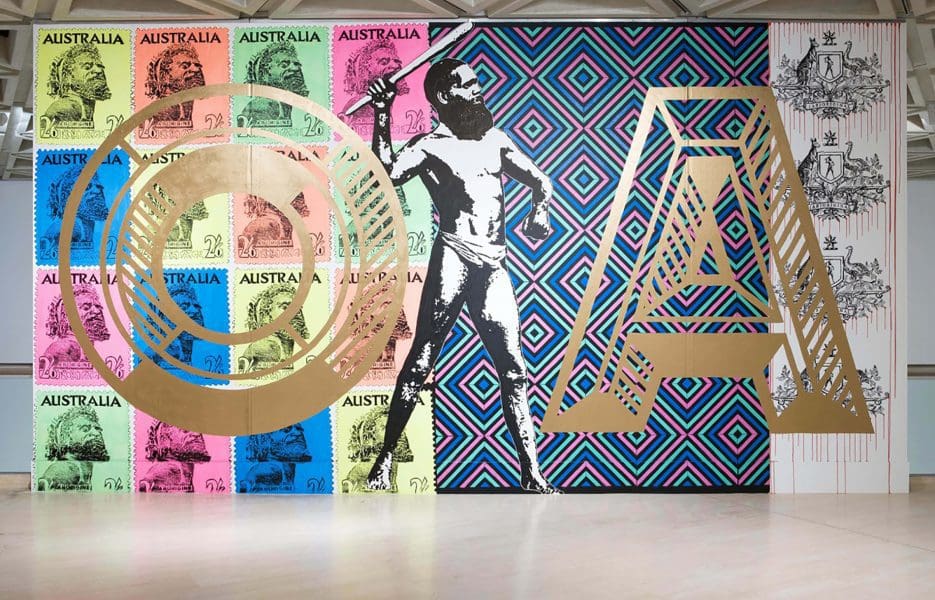
Reko Rennie, Rekospective, 2011, installation view, Art Gallery of Western Australia, Perth. Courtesy the artist.
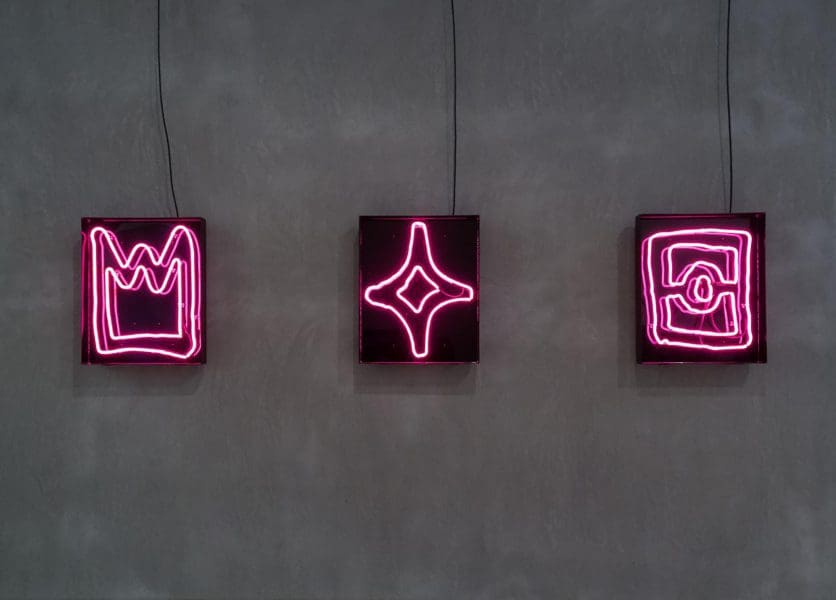
Reko Rennie, Regalia, 2013, opaque synthetic polymer resin, neon, 75.0 x 61.0 cm each. Courtesy the artist.
For Reko Rennie, art doesn’t belong to rarefied spaces. It’s woven into the fabric of our cities, as democratic as the air we breathe. When Rennie was ten, he would criss-cross the suburbs of Melbourne. The work of image-makers that came before him was seared into his consciousness, shaping the artist he’d one day be.
“I’d see graffiti popping up along the train lines, along the streets, and it really resonated with me,” he says. He gives a mischievous laugh. “I got to see a lot of political work—those images that [Australian photographer] Rennie Ellis captured of unionism, feminism and activism were all done around the corner from my house. A lot of those experiences started creating a visual diary, a series of memories that I was able to draw upon.”
There’s art you look at and art that looks at you, that permanently stamps your memory. Once you see a piece by Rennie, you can’t unsee it. For the last decade, he’s been making paintings, sculptures, installations and videos that forge an urgent and restless visual language. It’s one that articulates the power of his Kamilaroi/Gamilaraay ancestry via the cadences of urbanity and the rhythms of the street.
In Rennie’s work, hot pinks and cobalt blues render Aboriginality immediate, visceral. A lexicon of symbols—the crown, the diamond, the car—nod to history and pop culture. Riffs on Jean-Michel Basquiat and Indigenous geometry face off with hip-hop and road movies. He believes that art is about confounding tired ideas of authenticity.
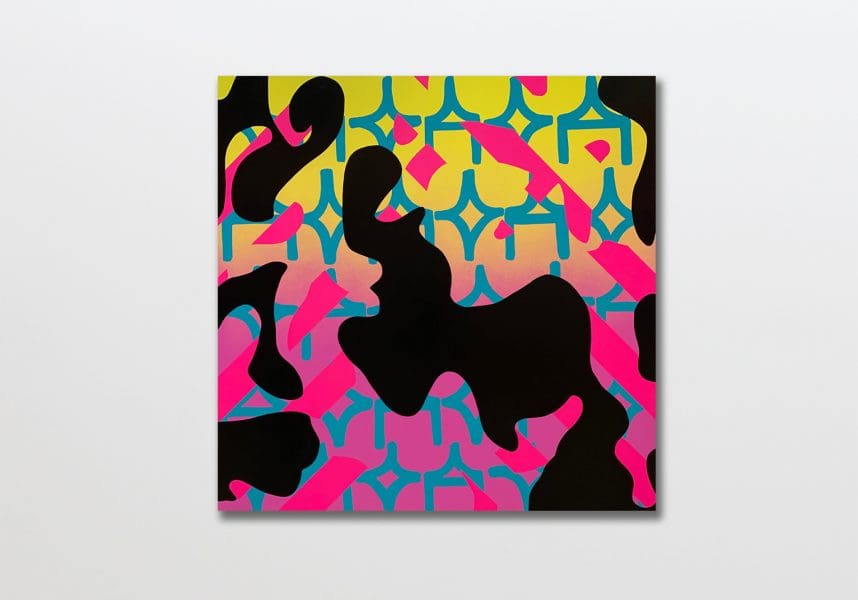
“I was this cross-cultural, urban Aboriginal kid and all I can come from is the position of my own experience,” he says. “I’ve got this saturated and vibrant representation of identity that has the ability to talk about anything I want to, and share it through art.”
Rennie grew up in 1970s Footscray, a suburb in Melbourne’s west that has long attracted the city’s immigrant and working-class communities.
“We had these influences of American subcultures— of hip-hop, graffiti and breakdancing,” he recalls.
His mother worked six days a week. They lived with his paternal grandmother, Julia, a Kamilaroi/ Gamilaraay woman who was born in the northern New South Wales town of Walgett. She would become a guiding force in his art and life.
Rennie started out as a journalist. “I thought I’d make a difference, but the truth is, negative stories sell, positive Indigenous stories don’t,” he says. “That’s when the switch flicked and I started harnessing my energy after hours—painting and creating canvases.”
He gave up his job at The Age to pursue art full-time in 2009. Early works such as Message Stick (Totem Pole), which showed in 2011 at Dianne Tanzer Gallery, nod to Neo Geo—an ’80s art movement that critiqued capitalism and the regulation of public space. The work also revolved around the diamond, a Kamilaroi symbol that would recur throughout Rennie’s practice.
“The ‘diamond’ represented this system that demarcated certain aspects of land—it was amazing, based on symbology and maps,” he says. “But my grandmother remembers when these symbols were deemed hedonistic. We were outlawed for practicing our own identity, so to introduce it in a contemporary sense is really powerful.”
Rennie’s grandmother, he tells me, was forcibly removed from her family as an eight-year-old to an Aboriginal mission where she trained as a servant.
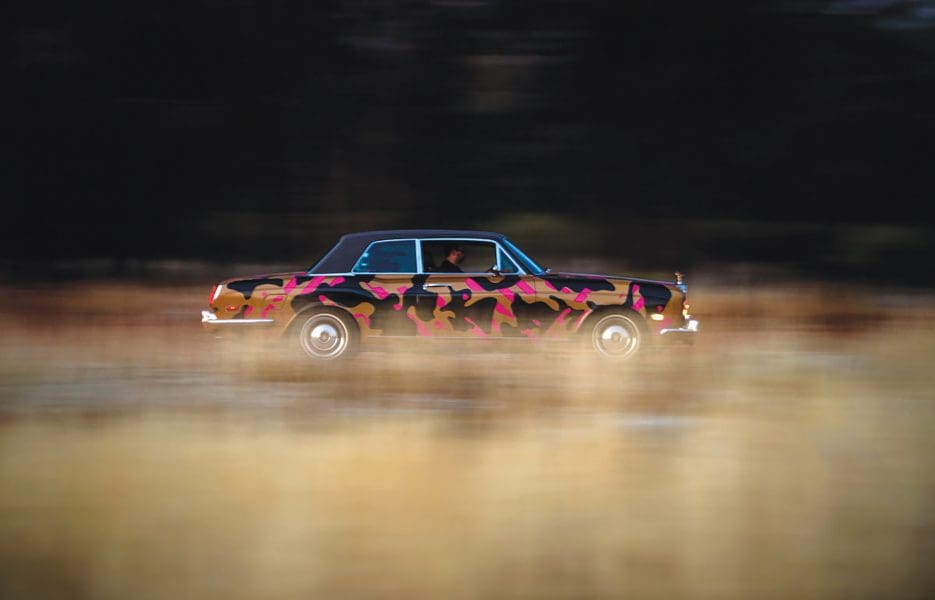
In his acclaimed 2017 video work, OA RR, which showed at the 57th Venice Biennale, Rennie returns to Kamilaroi Country in a gold Rolls Royce. It’s painted in camouflage, a motif that draws attention to histories that are hidden but deserve to be seen. He does burnouts, marking circles on the dirt. The artist was inspired by pictures of a family in Riverina in New South Wales, posing in front of a Rolls Royce at the start of the 20th century.
“It struck me that there was this colonial family going to church [in a] Rolls on Sunday,” he says. “At the same time, they were keeping Aboriginal people on their stations, who were doing all their work or working for rations. Women and children being abused, men being bashed.”
OA RR represents a homecoming; a return to his grandmother’s Country. It’s also a desecration— of colonialism, of wealth, of the monuments to privilege and respectability that Australia has always memorialised.
“We have this leader who is spending money on Captain Cook and this farcical history, and yet we have these crazy rates of Indigenous incarceration,” he says. “There is still so much to be corrected. I just think it is time to reflect.”
At the start of 2020, the 250th anniversary of Captain Cook’s arrival, Rennie installed Remember Me, an epic text work at the entrance of Carriageworks in Sydney’s Redfern. The words hover above the street in blood-red neon, a monument to Indigenous survival that reveals a seam of truth in the city’s fabric, like the artist’s heroes when he was growing up.
Rennie’s current show at STATION in Melbourne plays on the power of monuments. Titled RECKONING, it’s a reference to the way this cultural moment has created a fork in our collective history, a clearing that asks us what we are willing to acknowledge.
“I’m working on a series of paintings and carved panels and looking at the idea of camouflage again,” he smiles. “The show is about monuments and monumental images and about the timing of things. It’s about the collapse of some of those views. It’s always been about now, it really has.”
RECKONING
Reko Rennie
STATION Gallery
17 October—14 November
This article was originally published in the November/December 2020 print edition of Art Guide Australia.